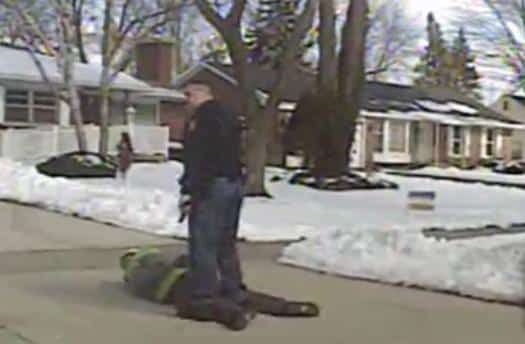
Editor’s note: This story is the first of two parts.
It can happen to any of us: A car breaks down, we make a wrong turn, some bad weather moves in while we’re traveling and all of a sudden, we find ourselves lost in the woods. We could even be in the woods on purpose, hiking or camping and suddenly find ourselves injured or sick. Either way, whether we got ourselves there on purpose or something went wrong, we’re faced with the same thing. What do we do now?
Anyone can survive a night or two in the woods; but whether or not you survive the entire episode depends a lot on what preparations you make and what you do when you realize that you’re lost. More than anything, this is a time when you need to keep your wits about you and think through your actions. Any wrong step can make your situation even worse.
Preparing to Survive
Your survival actually starts long before that walk in the woods. There are two important things you need to do, so that you’ll be ready to face that eventuality and come out of it okay. While it may be possible to survive without proper preparation, doing so will require much more knowledge on your part. Survival instructors you see on television, demonstrating how they would survive if stranded with nothing, are experts. You and I might not quite fit that description.
The first thing you’ll need is to have a survival kit or everyday carry bag. This will contain critical survival equipment, such as fire starters, water purifiers, an emergency blanket and some tools, as well as a little bit of food and water to tide you over. Traveling anywhere without an everyday carry bag is just asking for trouble, especially when it takes so little to make one.
The other big thing you should do beforehand is let someone know where you are going and when you expect to get back. Most people don’t bother with this step, preferring to live their lives as independently as possible. That’s foolish. If you want to survive, your best chances are when others who care about you know where you are. That way, if you don’t get back, they can contact the right officials and start a rescue operation.
Since any situation can turn into a survival situation, that means that you form the habit of letting someone know where you are. This really isn’t all that strange a thing to do and it doesn’t mean that you’re not a mature, independent adult. It’s just a common sense approach to survival.
Take Stock in Your Situation
The first thing to do when you realize that you’re lost is to stop and think. You’d be amazed how many times you can help yourself out just by thinking. All too often, we run off and take action, even if it’s the wrong action, just because it seems good at the moment. Taking a moment to take stock can save you from wasting a lot of energy you’ll need to use in order to survive. Ask yourself these questions:
- Where do I think I am?
- What do I have with me?
- What’s available around me?
- What’s the weather like?
- How long will it be until they realize I’m lost?
- What kind of condition am I in?
The answers to those questions will help you formulate a plan to survive. Regardless of the answers, you will need to do the same basic things. However, the answers will help you determine how you go about doing those things.
If you are injured or sick, you are going to be limited in what you can do. If you wandered off without your everyday carry bag, it will create other limitations. The terrain where you are and the weather you encounter there are going to have a lot to do with how you survive and what you need to do in order to survive.
Your First Priorities
The last thing you want to do is to put yourself in a worse situation. If you aren’t sure where you are and where civilization is, stop moving! Any additional traveling you do might just put you deeper into the woods and farther from any chance of rescue. There are many places in the United States where you can walk through woods for days, without ever reaching any sign of man.
Even worse than that, if you’re truly lost, you might actually just wander around in circles, expending energy for nothing. At the same time, you could miss rescuers that are looking for you. They always work in a pattern, checking off areas that they have already searched. If you wander back into an area that they have checked, because you are wandering around lost, the chances of them going back to find you are somewhere between zero and nothing.
Story continues below video
As long as you’ve told someone responsible where you were going and when you expected to get back, and they know what to do if you don’t show up, your chances of being rescued are pretty good. In most parts of the country, there are trained teams of volunteers who are ready to help find lost people.
The biggest risk you face is that of hypothermia. Every summer, people die in the Colorado Rockies from hypothermia. These are usually people who are out hiking or fishing. They fall in a stream late in the day and the sun goes down before they can make it back to their car. Even if it doesn’t drop to freezing, it can easily drop down into the 40s in the mountains at night. That’s enough to kill you, especially if you have wet clothes on.
So, the first things you need are shelter and fire. Between the two, you’ll be able to protect yourself from hypothermia. At the same time, they will offer you protection from any wild animals. While most wild animals are afraid of the scent of man, and that’s one area in which you don’t want to take any chances.
The best shelter you can find in the wild is a cave. However, you have to be careful about caves; they are seldom unoccupied. Check the cave out carefully to make sure that you aren’t taking over the home of any bears or wolves. Of course, caves are rather rare, so you’ll probably need to find something else. Other excellent shelters include rock outcroppings, deadfall trees and large live pine trees.
Seal out the elements entirely or use like a traditional sleeping bag
The purpose of your shelter is to protect you from the environment. So, when you’re looking for something to use for shelter, look for something that will keep the rain off your head and the wind off your back. That’s why I like pine trees, if I’m in an area where they grow. The bottom branches of a large pine tree will brush the ground at the ends; but underneath those branches you’ll find an open area that makes a great shelter. It’s even got a bed of pine needles for you to lie on.
Conserve Your Energy
While you are waiting for rescue, you’re going to have to keep yourself alive. More than anything, that means conserving your energy. Your body needs that energy to keep you warm. The less energy you expend, the less food and water you need.
Besides keeping yourself warm, water is your next biggest survival concern. Finding water is one of the few reasons to leave your shelter or vehicle. Don’t move from your vehicle to the water, unless you leave a clearly marked trail for others to follow. You’re better off going to get water and bringing it back to your shelter.
Since water flows downhill, the easiest way to find it is to go downhill as well. If you are in the mountains, about the only place you’ll find water is flowing down a valley between the mountains or at the bottom of the mountain. While freshwater springs do exist, they are extremely hard to find.
Use your ears as well as your eyes to help find water. Often, you can hear water flowing in the wild. You can also find it by looking at vegetation, especially if you are in an area with sparse growth. A greater density of plant and tree growth will indicate where there is water.
Get Rescued
Unless you didn’t bother to let people know where you went, your chances of getting rescued are probably pretty good. They’re much better than you managing to recue yourself. It’s very difficult to retrace your steps, so any movement you make may just make you harder to find.
If you are stranded in a vehicle, you’re better off staying with the vehicle. Not only does it offer you great shelter, but it’s larger and easier to see than you are. That will increase your chances of being rescued. Airplane pilots, highway patrol officers and park rangers all look for vehicles which have gone off the road. When they find them, they check them for anyone who might be stuck there.
Of course, you might not have a vehicle with you. In that case, you’ll need to do what you can to make your position obvious. A smoky fire can draw attention to your plight. Three smoky fires in a row are a standard distress signal. Space blankets and mirrors can be used as reflectors to let searchers know where you are. These are especially good for signaling search aircraft.
All pilots are aware of their surroundings. A reflection from a mirror can actually travel as much as ten miles into the air, striking the windows of an airliner. If you can do that, you’ll make the pilot aware that you need help. While he can’t rescue you on his own, he can let others know that there is someone on the ground in that location that is in need of help.
You can also use a whistle to signal searchers. This is especially useful when they get close to your location and are trying to find you. Since you probably won’t be able to see them until they are right at your shelter, blow your whistle regularly and then listen for any sort of response.
Remember, your main job in this case is to make it easy for the rescuers to find you. That means making your position obvious and creating signals that will help them find you. If you do that, then you stand a much better chance of being found.
Sign up for Off The Grid News’ weekly email and stay informed about the issues important to you










